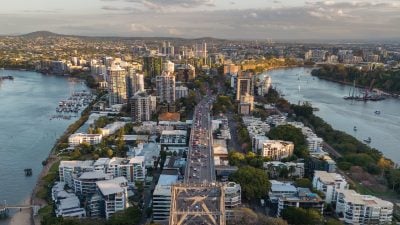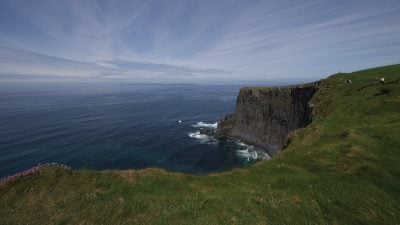Home / UK & Europe / Italy / Explore Enticing and Seductive…
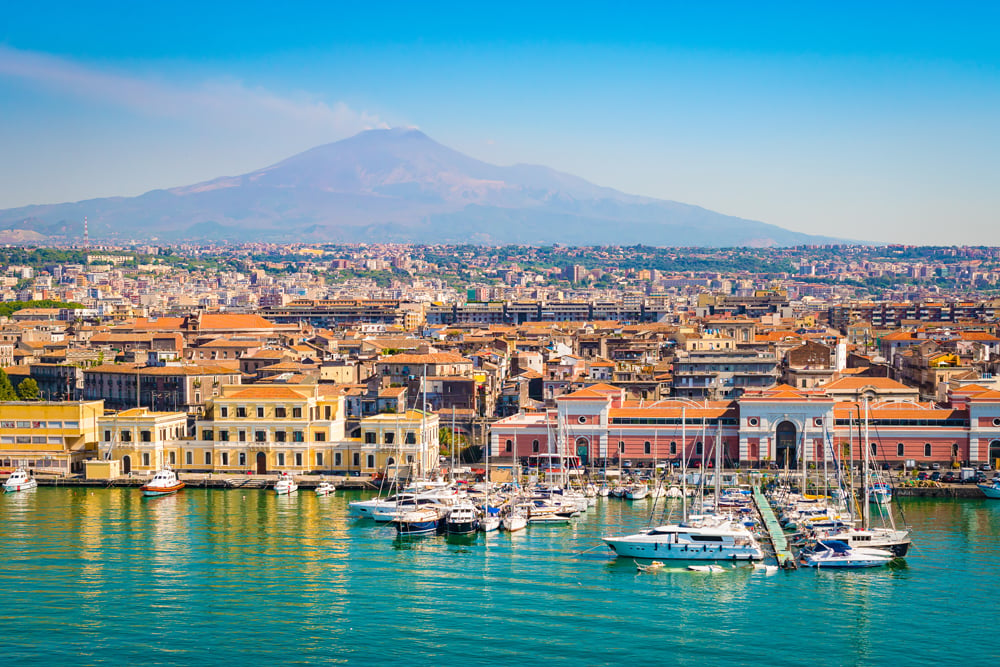
Explore Enticing and Seductive Sicily on an Italy Vacation
Sicily is literally the crossroads of bygone and present civilizations. Historically, it has absorbed the cultures of the Phoenicians, Romans and Greeks, plus several others. Today, all these influences are reflected in Sicily’s mosaic. However, you then add the gorgeous scenery, the mouth-watering food and the warm hospitality of the local people to come up with an outstanding destination on your Italy vacation.
The island of Sicily, at the foot of Italy, is large enough to need time to explore fully. However, it is so not overwhelmingly huge that you can’t get around using easily-arranged flights, trains, buses or self-drive rental cars. Let’s first break down the more important places to visit.
Palermo
Palermo is Sicily’s capital and largest city located on the north-western seaboard of the island. It has a cosmopolitan atmosphere and is quite easy to walk around in order to discover its highlights. In 2018, it had the honour of being Italy’s Capital of Culture. The following are some of its most important buildings you’ll find in Palermo on your Italy vacation.
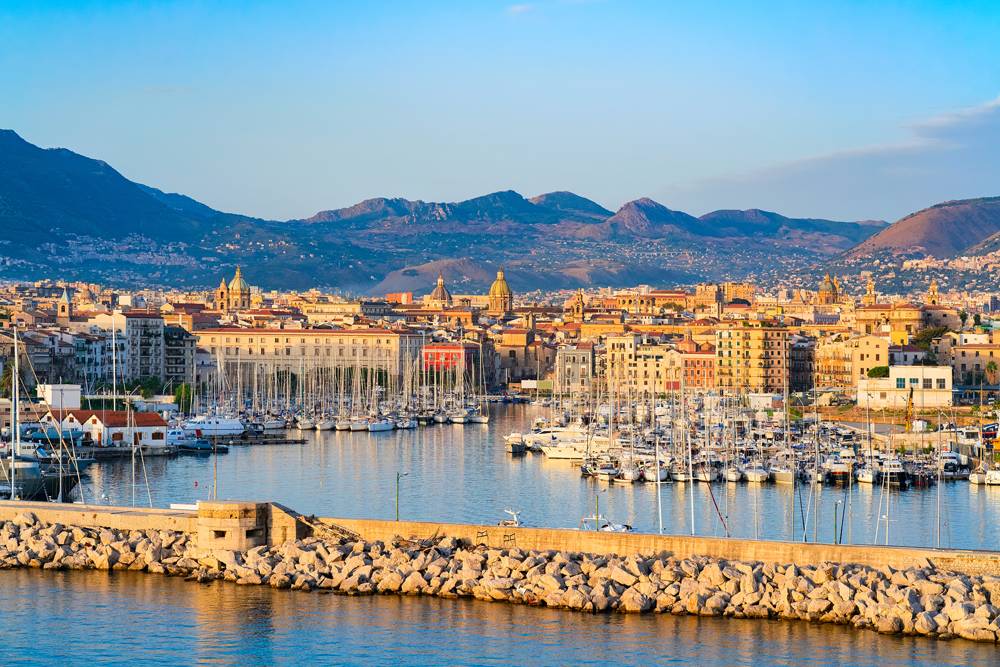
The Palazzo dei Normanni is not only the home of Sicily’s regional parliament but a palace which dates back to the 9th century. It boasts spectacular mosaics and interesting apartments which can be visited. Inside the Palazzo is the Cappella Palatina (Palatine Chapel), the royal chapel of the Norman kings, arguably Palermo’s number one attraction. It is an extraordinary chapel and known for its gold mosaics, inlaid marble floors and ceiling carvings. It took 8 years to build the chapel in the 12th century. The Teatro Massimo is an Art Nouveau architectural masterpiece and Europe’s second largest opera house offering performances of opera, ballet, and music concerts in season (September to June). The Cattedrale di Palermo (Palermo Cathedral) is a good example of Sicily’s unique Arab-Norman architecture. The interior contains the royal Norman tombs and the Treasury, which has a collection of goblets, vestments, and the famous Crown of Constance, found in her tomb in 1491. The roof of the cathedral offers great panoramic views of the city.

Two other attractions in Palermo on a visit to Sicily are the Orto Botanico, Italy’s largest botanical garden where you can visit the winter greenhouses and the aquarium, and the Catacombe dei Cappuccini to see the mummified remains of the 16th-century Capuchin monks and other locals who are buried in this crypt. There are literally thousands of bodies in different states of preservation.
While in Palermo, you should venture outside the city and enjoy two nearby attractions. If you don’t go to the village of Monreale, located on the slopes of Mount Caputo and roughly 20 minutes by car or tour bus, then you are missing out on what is possibly Sicily’s most popular cultural attraction, its cathedral. It is an amazing building and a UNESCO World Heritage site originally built in the 12th century. The interior is absolutely exquisite. The walls are covered with mosaics depicting stories and scenes from both the Old Testament and the New. You need to spend quite a bit of time just looking at these. The cloister is worth a visit. It is well-preserved and one of the finest Italian cloisters due to its size and beauty. It contains 216 white marble columns, some plain and some very ornate with decorations influenced by many cultures. The other out-of-town attraction is the small seaside resort of Mondello, a suburb of Palermo offering visitors the opportunity to swim, using one of the many beach huts available. The resort is known for its soft sand and clear blue sea. Small fishing boats can be seen bobbing up and down in the pretty harbour.

Catania
Catania, Sicily’s second largest city, is located on the eastern side of the island and is dramatically overshadowed by Europe’s most active volcano, Mount Etna, which can be seen from almost anywhere in Catania. It might not be Sicily’s most attractive city but it has a gritty and strong character of its own. It is also the perfect place to reach some important nearby destinations on your Italy vacation. It was devastated when Mount Etna erupted in 1693 but was rebuilt with some beautiful buildings including churches and small palaces. The Castello Ursino, built in the 13th century, houses a range of exhibits from all eras of Catania’s history. The attractive Piazza del Duomo is Catania’s main square. In the centre is a much-photographed 18th-century lava statue of an elephant supporting an Egyptian obelisk. The Duomo (cathedral) is an impressive church with a façade from the Baroque era. The Teatro Massimo Bellini opera house gives performances of not only their own native-born composer, Vincenzo Bellini but other operatic composers.
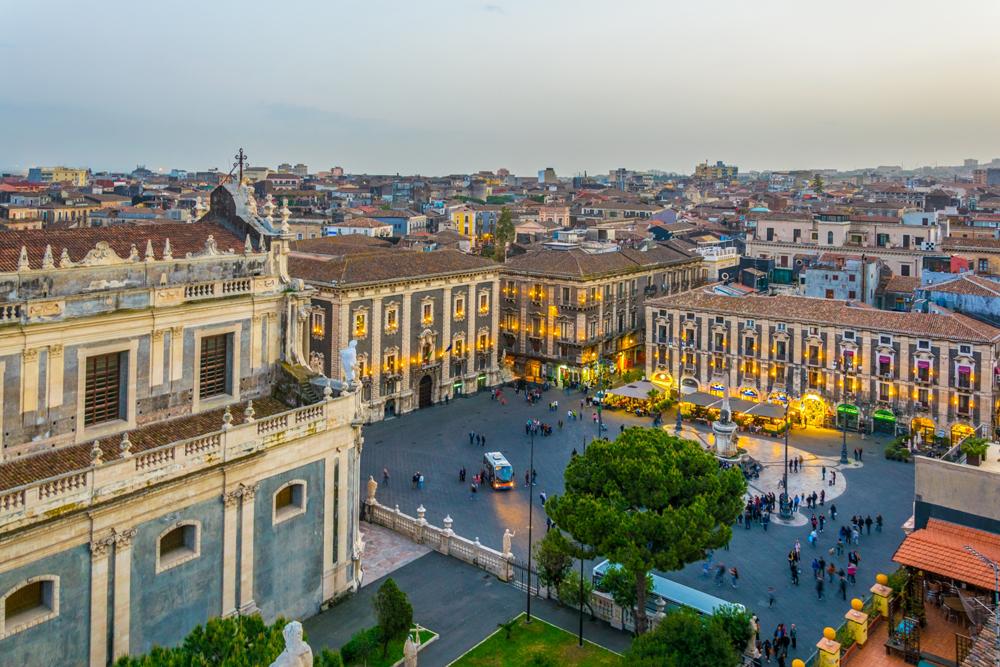
One absolute must in Catania is a visit to the morning fish market close to the main square. This very lively outdoor market is very entertaining – watch locals and vendors haggle over the quality and the price of their merchandise. From Catania, you can take the Circumetnea, a small railway line which circles the base of the volcano on a 5-hour train ride around Mount Etna, taking in the majesty of this huge volcanic mountain. You can also take a tour up part of the mountain.
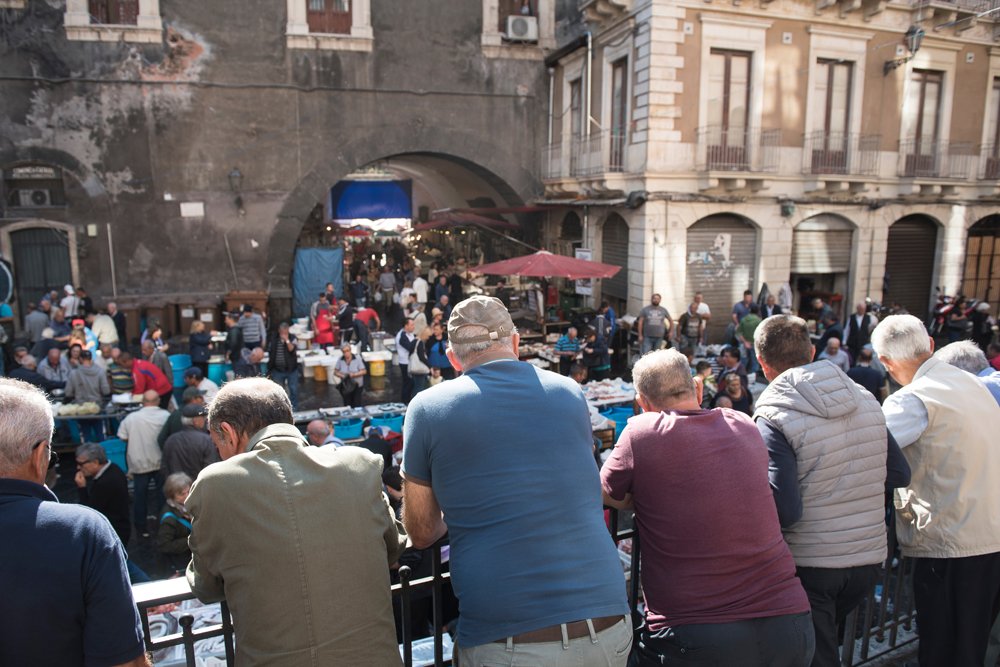
Taormina
Taormina, approximately 45 minutes north of Catania, is Sicily’s number one vacation resort on a trip to Italy and, in my opinion, the most beautiful place on the island. It is a picturesque, small town perched dramatically on a steep hillside high above the sea. It has been a popular and fashionable destination for well over a century and has been visited by many international celebrities including Richard Burton and Elizabeth Taylor, Czar Nicholas II, and Richard Wagner. This is probably because of the panoramic views, the scenery, and its charming ambience. Apart from these reasons to visit, Taormina was once a thriving Greek and then Roman town and one highlight here is the Teatro Greco, a Greco-Roman theatre built into a rocky hillside with breathtaking views along the coast and the small beach areas below reached by funicular. The historic centre of Taormina contains a long main pedestrian thoroughfare called Corso Umberto, offering everything from cafes, restaurants, and small boutique shops to attractive piazzas and narrow side-street alleyways and staircases to explore. The winner here though is the view on a clear day over the surrounding delightful coastline and picturesque countryside including Mount Etna in the background.
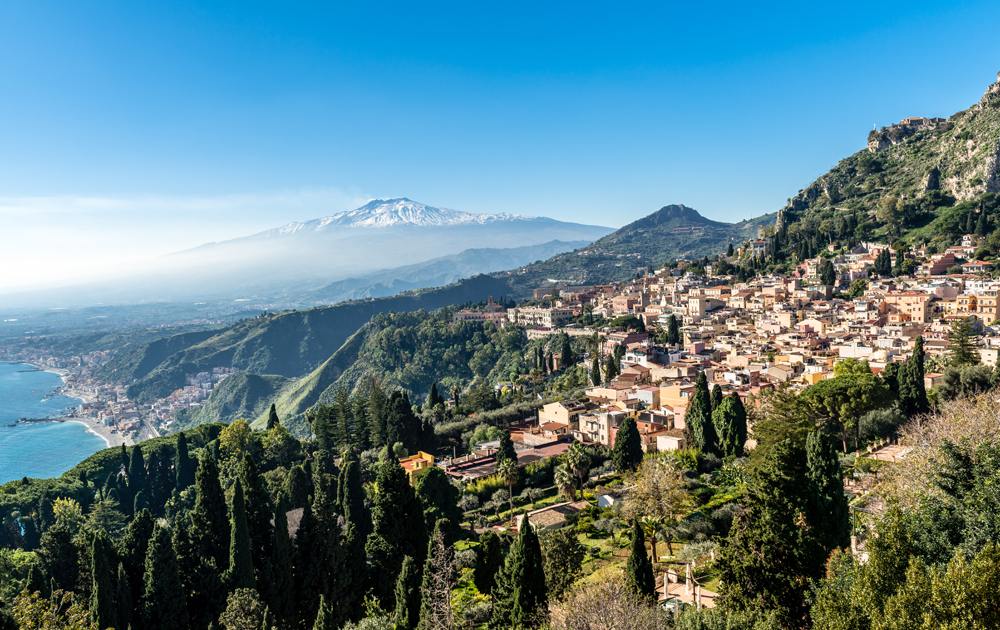
Syracuse
Siracusa (known in English as Syracuse) is an ancient town on the sea one hour by train south of Catania. This is one of my favourite cultural Sicilian cities. It has a laid-back, unassuming atmosphere even though it contains many important treasures. On your Italy vacation, you should probably head first to the outstanding Archaeological Park of Neapolis, which is a spread-out site of antiquity. Start with the finest and largest Greek theatre of its kind, the Teatro Greco. Cut directly into the rock, it was enlarged and modified several times over the centuries and is still in use today, as Greek plays are performed here in May and June of each year. Above the theatre is a low cliff with several caves cut into it including a nymphaeum (a grotto dedicated to a nymph or nymphs), where several statues can be seen. The Latomia del Paradiso (Paradise Quarry) is a peaceful, lush place filled with vegetation and lemon trees. The most famous sight here is the huge cave called the Ear of Dionysius (Orecchio di Dionisio), with its unbelievable acoustics. The Roman Amphitheatre (Anfiteatro Romano) is very atmospheric because, unlike the Greek theatre, it is overgrown and covered with flowers. Another important site in Syracuse is the Catacombs of San Giovanni, which were created as a cemetery for Syracuse’s substantial Christian community. There are supposedly 10,000 burials here with different kinds of tombs from small to elegant chambers.
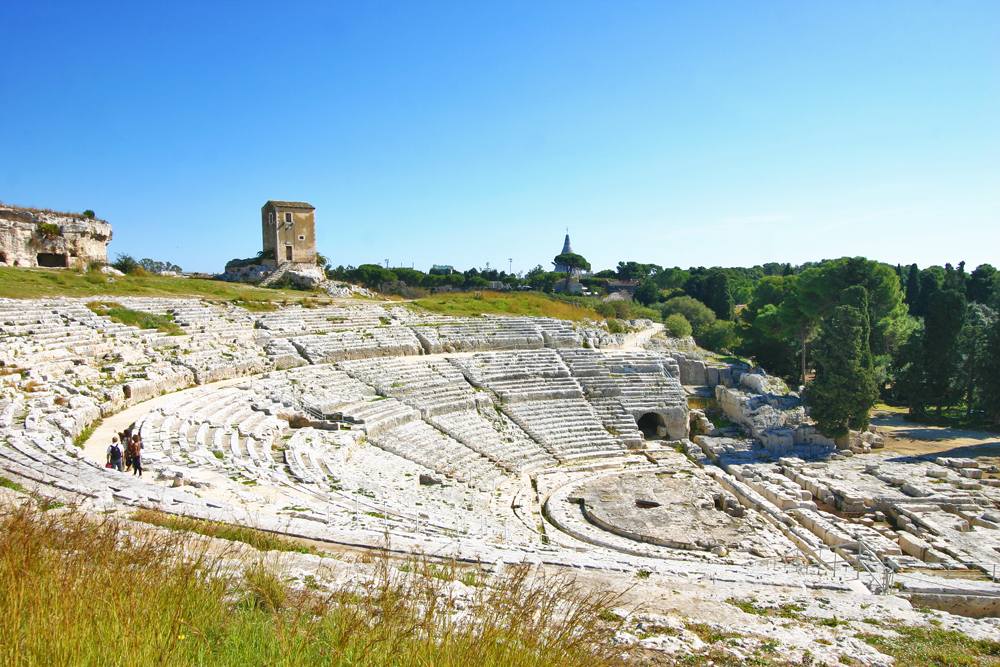
Not far from the centre of the city is a bridge which takes you over to the island of Ortigia, which is really the historical heart of Syracuse. You can stroll through the narrow attractive medieval lanes past Baroque palaces and churches. As soon as you cross the bridge, you are confronted with the Greek Temple of Apollo, albeit somewhat dilapidated. The Piazza del Duomo is the heart of Ortigia and an absolutely charming square containing restaurants and outdoor cafes. It is also the home of the Duomo di Siricusa (cathedral) which was the Greek Temple of Athena and has a giant gold statue of the goddess on its roof. At the tip of the island of Ortigia is the 13th-century Castello Maniace, which overlooks the entrance to Syracuse’s sheltered bay.
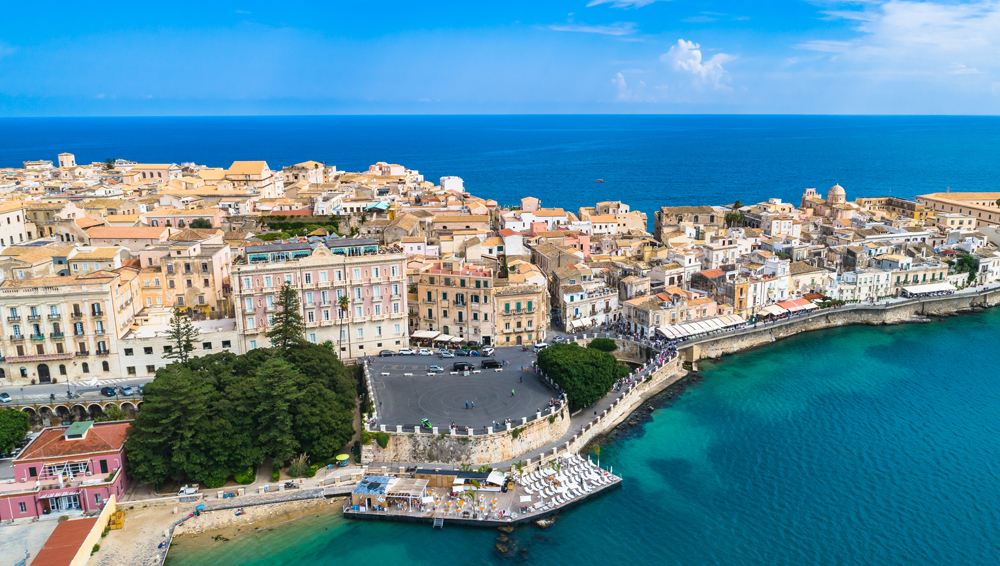
Agrigento
If archaeology is your thing, then Agrigento, situated on the southern coast, is another place to visit on an Italy vacation in Sicily. It is a UNESCO World Heritage site steeped in ancient Greek history. Numbers of well-preserved Doric temples, just outside town, date back to the 5th and 6th centuries BC and are what remains of the Greek city of Akragas and known as the “Valley of the Temples”. The temples are spread along a rocky ridge not far from the medieval town centre in a designated archaeological park. The town’s Museo Archeologico, between the town and the archaeological site, contains a wide range of exhibits from the region including statues and grave items. You can, if so inclined, visit the childhood home of the famous writer Luigi Pirandello (Six Characters in Search of an Author), which has been turned into a museum.
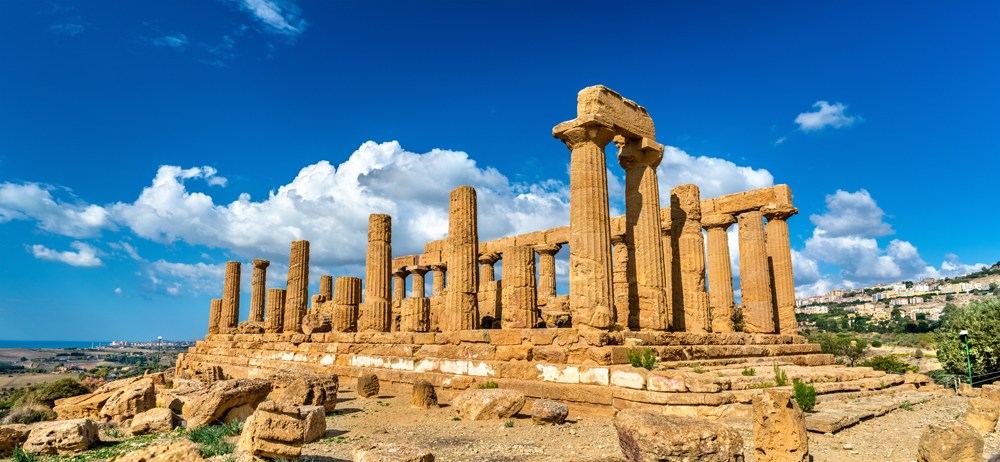
Ragusa
Ragusa, another UNESCO World Heritage site, is one of the most picturesque towns in Sicily. It consists of the lower and upper towns. The view from the upper town on a hilltop is quite breathtaking. The original town was built on a small steep-sided hill with deep valleys on three sides. After the earthquake of 1693, which destroyed many of south-eastern Sicily’s buildings, it was decided to rebuild Ragusa on nearby higher ground. The lower town, known as Ragusa Ibla, is full of picturesque lanes, cafes, restaurants, and gastronomic shops. It is a great place to wander around. The statue of St. George which is carried around town in devout processions can be found in the old part of Ragusa. The small Museo del Duomo contains stone statues and reliefs from pre-earthquake. The most outstanding building is the cathedral, the Duomo di San Giorgio, built in 1738. A tourist train departs from the Piazza Duomo and is an entertaining way of touring the main streets of Ragusa. The upper town is the modern part of Ragusa with elegant streets and shops.

Cefalu
Cefalu is known for its beautiful sunsets. It is a picturesque historic town situated on a rocky headland on the northern coast. It is also known for its excellent sandy beach which stretches alongside the town. However, the beach is not the only attraction you’ll find here on your Italy vacation. It has a medieval district with one of the highlights being the Duomo di Cefalu, an imposing Norman cathedral dating back to the 12th century. The interior is decorated with lovely mosaics created by artists from the 12th century and are one of Sicily’s greatest sights. Next to the cathedral is a restored cloister with columns depicting a range of biblical scenes. The Museo Mandralisca features some gems, including a portrait by Antonello da Messina and a striking vase from the 4th century BC.
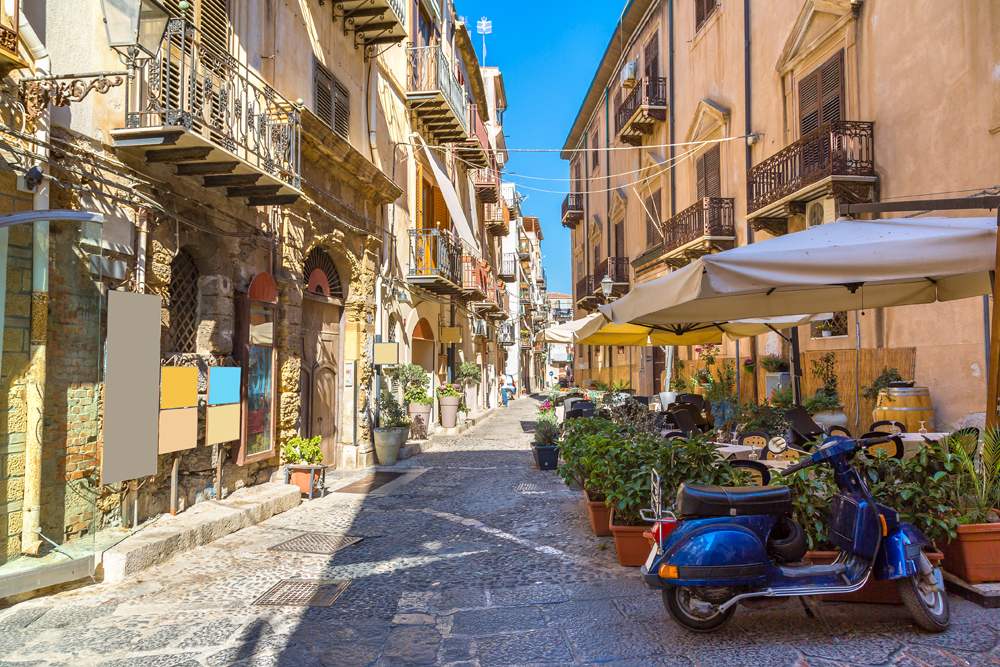
The Food and Wine of Sicily
I can’t end this article without mentioning the local food and wine. Sure, they have great pasta and pizza. Check out spaghetti ai ricci (spaghetti prepared with sea urchin), pasta con le sarde (with sardines), and pasta alla Norma (a specialty that originated in Catania). Fish and seafood are fresh and can be prepared in different ways. Try especially tuna, sardines, clams, anchovies, swordfish, and prawns. I don’t need to elaborate on the ice cream! Is the wine good? Yes! Try the local fortified wine, Marsala. It is produced in the Sicilian city of the same name and can be dry or sweet.
Related Article:
Eating Your Way Through an Italy Vacation

So there you have it. So much to see and so much to experience in Sicily on an Italy vacation no matter what your interests.
Get more travel inspiration by email.
Subscribe
0 Comments

Get the latest travel trends & hear about the best deals on vacations around the world.
If you’re a Globetrotter, these are the newsletters for you!

